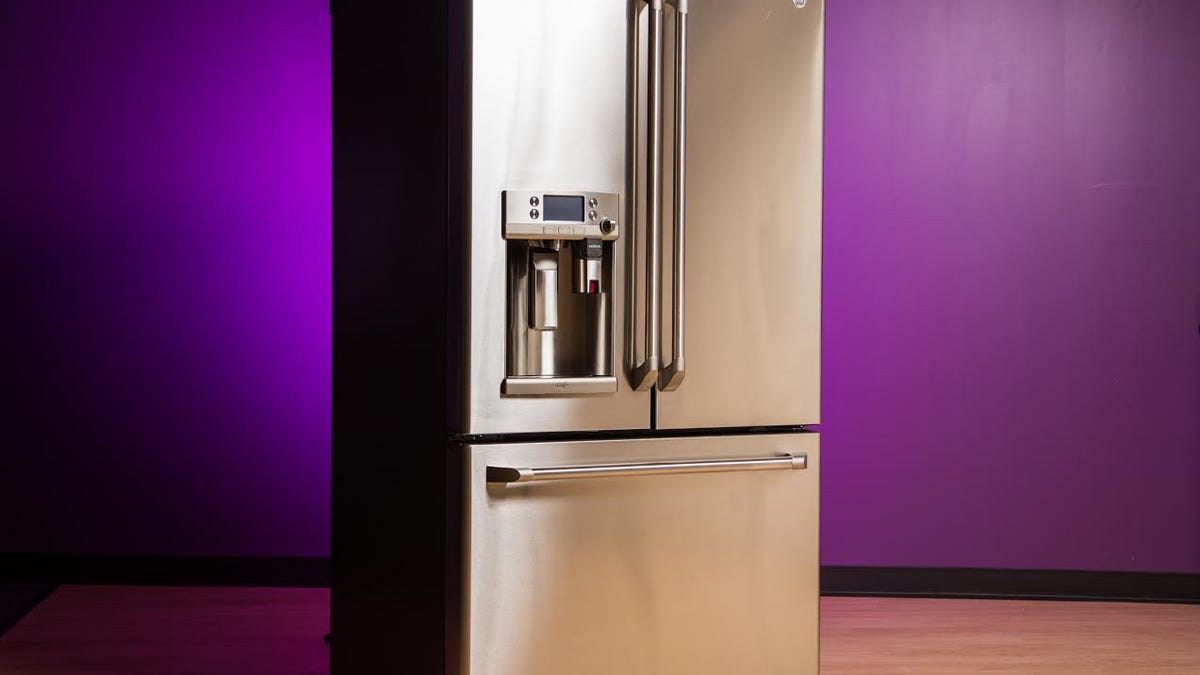How to level your refrigerator
Having problems with your fridge? Maybe it's the wrong kind of level. Learn why your refrigerator should be somewhat not leveled to function properly.

When you install a new refrigerator in your kitchen, one of the first things you should do before sliding it into position is make sure it's properly leveled. Skip that step, and the refrigerator's performance may suffer and some mechanisms might not function properly.
When leveling a refrigerator, you're not looking for the unit to be perfectly level. In fact, it should sit back a bit, with the front edge of the refrigerator higher than the back.
Fortunately, in most cases, leveling is a quick and painless process.
Problems with a refrigerator not properly leveled
A refrigerator that isn't properly leveled might have to work overtime to keep your perishables cool.
Refrigerators work by pumping a special liquid called the coolant through a loop, which pulls the heat out of the inside of the refrigerator as it turns from gas to liquid. In the back of your fridge, this process is reversed, pushing the heat outside. This process requires that the fridge is not tilted to the front, back left or right. If it is tilted, the coolant can pool in the pipes, making the pump work harder and making the fridge less efficient. You may not even realize it, but a tilted fridge could mean that your refrigerator is using more energy than it needs to.
Also, the ice maker may not function properly and the freezer defrost cycle or main refrigeration cabinet may not drain as they should.
Leveling a refrigerator
To avoid these problems altogether or to troubleshoot a freezer with ice buildup, you just need to make a few quick adjustments to the legs on the front of the refrigerator. Here's how:
- Remove the grill at the bottom front of the refrigerator. The grill typically has quick release clips or a few screws to undo before it can be removed. This varies by model, so consult your user manual if it's not immediately apparent how the grill is removed.
- Behind the grill, you will see one height-adjustable leg on either side. You may also see rollers. Some refrigerators use height-adjustable rollers for leveling.
- To adjust the height of threaded leveling legs, simply rotate the legs. You may need someone to help lean the refrigerator back to gain access to them. Some leveling legs can be adjusted with a wrench from the top side of the threads. Typically, the threading is backward, so rotating the legs clockwise will raise the front of the refrigerator, while rotating counter-clockwise will lower it.
- For refrigerators with height-adjustable rollers, look for an adjustment screw near the top of the roller. It varies by model, but in most cases, using a screwdriver to tighten the screw (clockwise) will raise the front of the refrigerator and loosening (counter-clockwise) will lower it.
- If your refrigerator has rollers and leveling legs, the legs should be raised enough to bear the weight of the refrigerator, lifting the rollers off the floor. If doing this lifts the front of the refrigerator more than 0.5 inches (13 mm) higher than the back, consider pulling the refrigerator out from the wall and raising the back leveling legs, as well.
You may need to repeat this process a few times to get the leveling just right. Another way to to judge that the front-back level is right is to open the door slightly, then let go of the handle. On a properly leveled fridge, the door should gently swing shut, without you having to do anything, by gravity.
Left to right, the refrigerator should be perfectly level. Front to back, the angle should be minimal. Generally, manufacturers recommend the front of the refrigerator to be approximately 0.25 to 0.5 inches (6 to 13 mm) higher than the back. This should be enough for the doors to close on their own with enough force to make a complete seal without slamming shut.
Finally, install any snap rings or other parts that came with the refrigerator to lock the adjustable legs in place. If your refrigerator didn't come with any, don't worry: unless you're a habitual fridge door slammer, the legs are unlikely to move.



